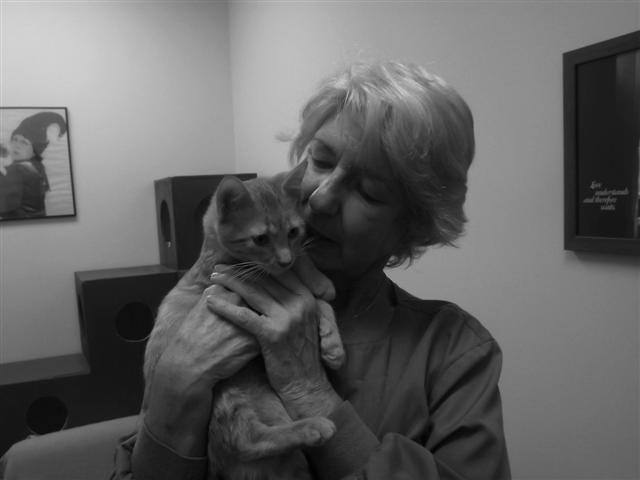Purrfectly good pets in shelters are squaking for a home. All kinds of animals – dogs, cats, birds – are in shelters acrossAmerica. According to the The American Society for the Prevention of Cruelty to Animals website, five to seven million animals enter animal shelters each year in the US.
Some LZHS students help animals in need by adopting pets from animal shelters. Olivia Carey, sophomore, is a student whose family adopted an abandoned dog, Frankie, a few weeks ago from a nearby shelter.
“Frankie is eight months old. We got him a couple of weeks ago from Orphans of the Storm, which is a shelter inDeerfield,” Carey said. “I’ve always wanted a dog . . . and we went to a shelter [because] my mom does not believe in puppy mills, so she would rather take a dog from a shelter to a happy home.”
A puppy mill is a large-scale commercial dog breeding operation where profit is given priority over the well-being of the dogs, according to website. For example, most puppy mills have overcrowded and unsanitary conditions, inadequate veterinary care, and not enough food or water. The only goal of puppy mills is to produce as many litters of puppies a year as possible, according to the ASPCA website.
Carey said she thinks adopting, rather than buying animals from pet stores or breeders, is important because adopting provides abandoned, helpless animals with desperately needed homes. Animals who are not adopted are euthanized, a term commonly known as ‘putting an animal to sleep’, because shelters do not have the space to take care of all the abandoned animals. According to the ASPCA website, approximatelythree to fourmillion animals are euthanized each year because not enough animals are adopted from shelters.
Katie Evans, Intake Coordinator atSave-A-PetAdoptionCenter, agrees that adoption helps the millions of animals in need of a home and prevents the euthanizing of animals.
“So many pets out there are in need of a home,” Evans said. “Millions of pets are euthanized every year, so many you can’t even get an accurate number because people don’t even want to know.”
Since there are more animals coming into shelters and not enough people looking to adopt, a high number of animals in shelters must be euthanized due to space and rooming issues. There are a variety of reasons why animals originally enter shelters.
“Most pets are in shelters because of families moving, that’s the number one reason I would say,” Evans said. “Also, if families can’t afford their pets anymore, they give them to shelters.”
Another way people can help abandoned animals, besides adopting, is volunteering at an animal shelter. Lauren Katzman, English department chair, volunteers at A Refuge for Saving the Wildlife, a parrot rescue and rehabilitation center in Northbrook, Illinois.
“It’s a parrot rescue, so the refuge takes in parrots whose owners can’t take care of them anymore,” Katzman said. “We work with them, rehabilitate some that have been abused or not taken care of, and then we find them new homes.”
Parrots have an extremely long lifespan, and most owners are not aware of this when they first adopt or buy a parrot. According to Katzman, the reason most parrots are in shelters is because the parrots have lived longer than the owners expected.
“Some people don’t understand how long a parrot can live . . . so sometimes it’s truly the owners have gotten too old and there is nobody left to take care of the birds,” Katzman said. “People didn’t realize what they were buying. The larger parrots can live 75 to 100 years.”
Since Katzman has worked firsthand with abandoned pets, she warns that owning a pet is a big responsibility that people should take seriously and emphasizes when one adopts a pet, one should be ready to make a lifelong commitment to take care of that animal.
“With birds, sometimes people didn’t realize what they were buying, and they don’t have a lot of experience with big birds,” Katzman said. “I think sometimes people take adopting a little frivolously and don’t intend to honor their commitment of providing that animal with a permanent home.”
If people are serious about taking care of a pet, Katzman advocates adopting an animal from a shelter to help out one of the many animals in need instead of supporting puppy mills or breeders.
“It’s always good to help out an animal who needs a home, and the more you buy from breeders, the more they breed, and the cycle keeps going,” Katzman said. “People make money off of breeding more and more [animals], but yet we have a lot of them living in shelters and living in the streets.”

